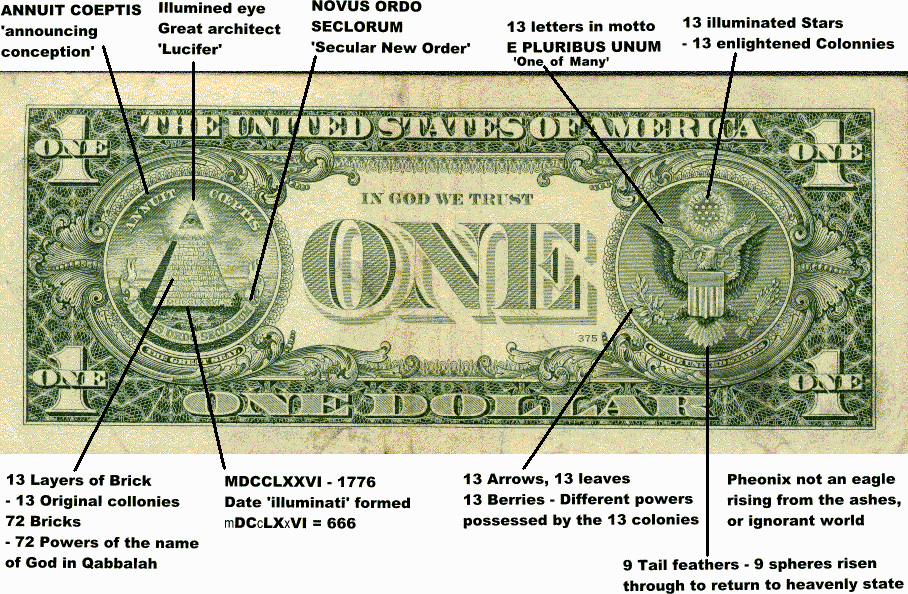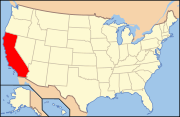|
|
Lion of Saint Mark
From Wikipedia, the free encyclopedia
The Lion of Saint Mark, representing the evangelist St Mark, pictured in the form of a winged lion,[1] is the symbol of the city of Venice and formerly of the Republic of Venice. It appears also in both merchant and military naval flags of the Italian Republic. The Lion of Saint Mark is also the symbol of the award of the Venice Film Festival, the "Golden Lion", and of the insurance company Assicurazioni Generali.
Other elements often included in depections of the lion include a halo over his head, a book, and a sword in its paws.
[edit] St Mark and Venice
Venetian tradition states that when St. Mark was traveling through Europe, he arrived at a lagoon in Venice, where an angel appeared to him and said "Pax tibi Marce, evangelista meus. Hic requiescet corpus tuum." (May Peace be with you, Mark, my evangelist. Here your body will rest.) This (possibly apocryphal) tradition was used as justification by Rustico da Torcello and Bon da Malamocco[2] in 828[3] for stealing the remains of St. Mark from his grave in Alexandria,[4] and moving them to Venice, where they were eventually interred in the Basilica of St. Mark.[5]
[edit] Symbolism
St Mark, represented as a lion, is a typical Christian iconography derived from the prophetic visions contained in the verse of the Apocalypse of St John 4: 7. The lion is one of the four living creatures described in the book as a place around the throne of the Almighty and they are chosen as symbols of the four evangelists. These "beings" were previously described by the prophet Ezekiel.
The lion is associated with Mark as a function of the words with which he began his Gospel with reference to St John the Baptist: "The beginning of the gospel of Jesus Christ, Son of God."
As it is written with the prophet Isaiah: "Behold, I send my messenger ahead of you, he will prepare your way."
The voice of the one who cries in the wilderness: "Prepare ye the way of the Lord, make straight his paths." (Gospel according to Mark 1:1–3)
John the Baptist wore in the Christian imagination a lion's skin and the evangelic phrase of the voice crying in the wilderness echoes the idea of a roar in the desert.
The lion also symbolizes the power of the Evangelist's word, the wings symbolize the spiritual elevation, while the halo is the traditional Christian symbol of holiness.
However, the lion symbols express also the significance of majesty and power (drawn especially from the upward feline tail), while the book expresses the concepts of wisdom and peace and the halo gives an image of religious piety. The sword, in addition to the meaning
There are many symbolic interpretations with the possible combination of sword and book:
- An open book is a symbol of the state's sovereignty (many depictions are of doges kneeling before such representation);
- A closed book, however, is considered as a symbol of a delegated sovereignty, and hence the public courts;
- An open book (and the sword on the ground is not visible) is popularly considered as a symbol of peace for the state of Venice, but this is not corroborated by any historical source;
- A closed book and a drawn sword are popular but mistakenly considered as a symbol of the state in war;
- Finally, an open book and a sword are considered as a symbol of public justice.
However, these interpretations are not universally accepted as the Republic of Venice (Serenissima) never codified its symbols. Rare, but are presented, are also depictions of the lion without a book or a sword and sometimes without the halo (especially in a representation of a statue).
In some depictions the lion rests his front paws on the ground, often in cities with rivers or in ones close to water, indicating the Venetian balanced power on land and sea.
[edit] Gallery
-
-
1651 map depicting the Lion of St Mark over Crete
-
-
-
-
-
-
-
-
-
[edit] References
|
|
|
|
|
JUAN MARCOS FALLECIO EL 25 DE ABRIL (DIA DE JUAN MARCOS)-RELACION CON LA CONSTELACION DEL TORO Y EL LEON
Marcos el Evangelista
De Wikipedia, la enciclopedia libre
San Marcos Evangelista (en griego: Μάρκος) (siglo I) es considerado tradicionalmente el autor del Evangelio de Marcos y el fundador y primer obispo de la Iglesia de Alejandría.
Marcos en el Nuevo Testamento y en otras fuentes [editar]
Suele identificársele con Juan, llamado Marcos. Este personaje aparece varias veces en los Hechos de los Apóstoles. Se le cita por primera vez en Hechos 12:12, cuando Simón Pedro, milagrosamente liberado de la cárcel, se refugia en casa de María, madre de "Juan, por sobrenombre Marcos". Acompañó a Pablo de Tarso y a Bernabé en el primer viaje de Pablo (Hechos 13:5), pero se separó de ellos cuando llegaron a Panfilia, regresando a Jerusalén (Hechos 13:13 en estos versículos se hace referencia a él simplemente como "Juan"). Cuando Pablo iba a iniciar su segundo viaje, tuvo una grave disputa con Bernabé a propósito de "Juan, llamado Marcos": Bernabé quería que fuese con ellos, pero Pablo se negaba, ya que les había abandonado en el viaje anterior. Pablo y Bernabé terminaron por separarse, y Marcos acompañó al segundo en su viaje a Chipre (Hechos 15:37-39).
No está claro si este personaje, "Juan, llamado Marcos" es el mismo al que se hace referencia en algunas epístolas atribuidas a Pablo, concretamente en 2Timoteo 4:11, Colosenses 4:10, Filemon 1:24 y en la Primera Epístola de Pedro (1Pedro 5:13). En Colosenses se dice de él que es primo, o sobrino, de Bernabé, lo que podría explicar que éste disputase con Pablo acerca de Marcos.
En el final de la Primera Epístola de Pedro, éste se refiere a "mi hijo Marcos". Mientras que las iglesias copta, católica y ortodoxa aseguran que se trata de un hijo espiritual (es decir, que Marcos hubiese sido bautizado por Pedro) o que simplemente Pedro le tenía mucho cariño, varios teólogos protestantes no tienen inconveniente en interpretar que podría tratarse de un hijo físico.
Según el Evangelio que se le atribuye, cuando Jesús fue apresado en el Huerto de los Olivos, le seguía un joven envuelto en una sábana, habiendo especulado algunos con la posibilidad de que este joven fuera el mismo Juan Marcos.
La tradición dice que Marcos evangelizó como Obispo de Alejandría, en Egipto, donde realizó varios milagros y estableció una iglesia y su famosa escuela cristiana, nombrando un obispo, tres presbíteros y siete diáconos y murió allá como mártir en el año 68, un 25 de abril.
Según la tradición, la Iglesia Copta de Etiopía tiene su origen en las prédicas de San Marcos, autor del Segundo Evangelio en el siglo I, que llevó el cristianismo a Egipto en la época del emperador Nerón.
Los Hechos de San Marcos, un escrito de mitad del siglo IV, refieren que San Marcos fue arrastrado por las calles de Alejandría, atado con cuerdas al cuello. Después lo llevaron a la cárcel y al día siguiente le volvieron a aplicar el mismo martirio hasta que falleció. Luego echaron su cuerpo a las llamas, pero los fieles lograron sacarlo y evitar su destrucción.

|
|
|
|
|
¿QUE HAY DETRAS, CON OJOS DE AGUILA Y OJOS DE GATO, DETRAS DEL COMANDANTE MARCOS?
OJO DE GATO=OJO DE RA=OJO DE YHWH
DETRAS DEL OJO DE GATO ESTA EL REY LEON
LEONARDO DA VINCI
OJO DE GATO=VESICA PISCIS
EL OJO DE GATO ESTA DISEÑADO EN FUNCION A VESICA PISCIS (JUAN 21:11), OSEA AL NUMERO 153.
VESICA PISCES TIENE RELACION CON EL NUMERO 153.



IN GOD WE TRUST
NOSOTROS CREEMOS EN DIOS
EL 1 DE MAYO DE 1776=1/5/1+7+7+6=21=2+1=3 OSEA 1/5/3
harles Darwin también dio énfasis a esta creencia implicando que el útero gestante del acuoso gestando era igualmente interdependiente de los ritmos  lunares de las mareas, vinculando nuestra herencia y orígenes al mar. lunares de las mareas, vinculando nuestra herencia y orígenes al mar.
"porque, cuando Jonás estaba en la barriga del pez tres días y tres noches, así el Hijo de Hombre estará en el corazón de la tierra tres días y tres noches".
- Mateo12:40
Como acompañado por la historia del pez de Jesús, ayudando milagrosamente a sus discípulos a hacer una captura de 153 peces
PIRAMIDE DE LOUVRE Y VESICA PISCIS
OJO DERECHO DE LA MONA LISA ES MASCULINO Y EL OJO ISQUIERDO FEMENINO
LA LLAVE CON LA FLEUR DE LIS ESTA RELACIONADA CON LA CONSTELACION DE SCORPION YA QUE HERCULES PISA LA CABEZA DEL DRAGON/DRACO EN DICHA CONSTELACION. LA FLEUR DE LIS ES EL MISMO SCORPION. EN LOS OJOS DE LA MONA LISA, SABEMOS QUE ESTAN DISEÑADOS EN FUNCION A VESICA PISCIS, OSEA EL NUMERO 153, EXPRESADO EN EL EVANGELIO DE JUAN 21:11, CON REFERENCIA A LA CANTIDAD DE LOS PECES, OSEA UNA OBVIA REFERENCIA A VESICA PISCIS. SABEMOS QUE LA LLAVE ES UNA REFENCIA A PHI-LADEL-PHI-A, SEGUN APOCALIPSIS 3, QUE ES UN NEXO CON LA CONSTELACION DE DELPHI-NOS EN LA PUERTA DE ACUARIO. LOS OJOS DE LA GIOCONDA, SON UNA REFERENCIA ESOTERICA A LA UNION DEL HOMBRE CON LA MUJER EN EL CONTEXTO DE ACUARIO. ESE ES EL MENSAJE DE LA LLAVE DE DAVID/LLAVE DE SALOMON. ESTA TODO CODIFICADO. ILUMINACION ES SINONIMO DE LOUVRE/CODIGO DA VINCI.
JUAN MARCOS/
MARTE/MARTILLO/GRIAL
|
|
|
|
|
La Tribu Gady el Mashiaj pasa a convertirse en el Representante de todas las tribus de hijos de Israel, todo lo que se diga de Gad involucra a las 12 Tribus de Israel.
En estos textos Moshe profetiza sobre cada una de las tribus de Israel en un contexto de los últimos días es decir en los Días del Mashiaj, inmediatamente antes de su muerte. En D’varím (Deut) 33.20 está escrito:
"De Gad él dijo ‘bendito es Aquel que agranda a Gad. Él mora como un LEÓN y arrancará el brazo, también la Corona." D’varim (Deut.) 33.20-21 Tora Mizrajit.
Primeramente, vemos que el Bendito es el Eterno Mismo agrandará a Gad en los últimos días, para realizar una función importante. Esa función se describe hacia el final de D’varim 33.20. La tribu de Gad morará como un león o como el león sobre Israel, mientras recibe el brazo de gobierno arrancado y removido de la tribu de Juda, poniéndose y llevando así la corona o el cetro sobre todo Israel.
SAN MARCOS (CALIFORNIA-ESTADOS UNIDOS) UBICADO EN EL PARALELO 33-BEVERLY HILLS (METRO GOLDWYN MAYER), CALIFORNIA, PARALELO 33

San Marcos (California)
De Wikipedia, la enciclopedia libre
San Marcos es una ciudad localizada en el norte del condado de San Diego, California, EE. UU.. Al 2006, la ciudad tenia una población total de 76,725. En las afueras de la región de San Diego, está la Universidad Estatal de California, San Marcos.
San Marcos está localizada en las coordenadas  33°8′31″N 117°10′13″O / 33.14194, -117.17028 (33.142077, -117.170233)[1] . 33°8′31″N 117°10′13″O / 33.14194, -117.17028 (33.142077, -117.170233)[1] .
Metro-Goldwyn-Mayer Inc. (o simplemente MGM) es una gran compañía, involucrada principalmente en la producción y distribución de películas de cine y programas de televisión. Sus principales subsidiarios fueron MGM Studios Inc., United Artists Corporation y Orion Pictures Corporation (adquirida en 1997). En una importante operación mercantil, la empresa fue vendida a un grupo de compañías encabezadas por Sony Pictures Entertainment que es también propietaria de Columbia Pictures. MGM tiene su sede en Beverly Hills, California desde el 22 de agosto de 2011). Antes de esta fecha, MGM tenía su sede en la MGM Tower de Century City, Los Ángeles.[1]
Beverly Hills
De Wikipedia, la enciclopedia libre
| Beverly Hills |
| Ciudad de los Estados Unidos |

Beverly Hills tomada desde el Boulevard Wilshire |
Lema: The Friendly City
Growing Together |

Ubicación en el condado de Los Ángeles y en el estado de California

Ubicación de California en EE. UU. |
| Entidad |
Ciudad |
| • País |
 Estados Unidos Estados Unidos |
| • Estado |
 California California |
| • Condado |
Los Ángeles |
| Alcalde |
Jimmy Delshad |
| Fundación |
22 de octubre de 1906 |
| Superficie |
|
| • Total |
14,7 km² |
| • Tierra |
14,7 km² |
| • Agua |
0,34 km² |
| Altitud |
|
| • Media |
79 msnm |
| Población (2010) |
|
| • Total |
34 109 hab. |
| • Densidad |
2 320,34 hab/km² |
| Huso horario |
Pacífico: UTC-8/-7 |
| Código postal |
90209, 90210, 90211, 90212, 90213 |
| Prefijo telefónico |
310, 323, 424 |
| Sitio web oficial |
Beverly Hills se encuentra ubicada en las coordenadas  33°16′47″N 117°11′37″O / 33.27972, -117.19361. Según la Oficina del Censo, la ciudad tiene un área total de 14,7 km² (5,7 mi²), de la cual 14,7 km² (5,7 mi²) es tierra y 0,0 km² (0 mi²) (0.0%) es agua. 33°16′47″N 117°11′37″O / 33.27972, -117.19361. Según la Oficina del Censo, la ciudad tiene un área total de 14,7 km² (5,7 mi²), de la cual 14,7 km² (5,7 mi²) es tierra y 0,0 km² (0 mi²) (0.0%) es agua.
NUMERO 33
|
|
|
|
|
| Reply |
Message 82 of 82 on the subject |
|
| Reply |
Message 9 of 11 on the subject |
|
|
|
|
| Reply |
Message 10 of 11 on the subject |
|
|
|
|
| Reply |
Message 11 of 11 on the subject |
|
|
|
|
|
|
|
|
|
|
|
|
 Vesica piscis Vesica piscisTAURO/TORO/PLEYADES/7 COLINAS DEL VATICANO
 Fermentation - nigredo - bread and wine of Christ    La vesica piscis (vejiga de pez en latín) es un símbolo hecho con dos círculos del mismo radio que se intersecan de manera que el centro de cada círculo está en la circunferencia del otro. Esta forma se denomina también mandorla (que significa "almendra" en italiano). Era un símbolo conocido en las antiguas civilizaciones de Mesopotamia, África y Asia.
CATOLICO/CAT-OLICO/CAT-EDRAL/CAT/GATO-EL OJO DEL GATO TIENE LA MISMA FORMA QUE LA DEL SEXO FEMENINO "VESCICA PISCIS"
|
13/5 (PRIMERA APARICION DE FATIMA)-8/8 (LION S GATE))=88 DIAS EXACTOS
13/5-31/5=19 DIAS
JUNIO=30 DIAS
JULIO=31 DIAS
AGOSTO=8 DIAS
19+30+31+8=88 DIAS EXACTOS
INCLUSO EL PERIODO FATIMA 13/5-13/10=153 DIAS=JUAN 21:11=VESICA PISCIS=OJO DE GATO
DE TERROR
|
|
|
|
|
|
|
|
papa numero 266
9 MESES LUNARES=266 DIAS
FR-ANC-ISCO / J-ANUK-A
|
|
|
|
|
Simply wish to say your article is as surprising. The clarity in your post is simply spectacular and i can assume you are an expert on this subject. Well with your permission allow me to grab your feed to keep up to date with forthcoming post. Thanks a million and please continue the enjoyable work.
|
|
|
|
|
CLEOPHAS/LEO/LEONARDO DA VINCI/LEON DE LA TRIBU DE JUDA/DAVID
C=LUNA CRECIENTE
|
|
|
|
|
Dog Days Prophecy
Sirius, Regulus, Super Bowl, financial crises, earthquakes & August 2015 Lucifer time codes
By Goro
August 02, 2015

[Great Sphinx aka "Father of Terror"]
[NOTE: Yes, the global stock market chaos of August 2015 was predicted with precision in this article (posted on Aug 2, 2015) as you'll see below or in the new article When Prediction Comes True.... If you're new here, this is not a fluke as this is what I do on my websites (Etemenanki & STRUG). You may find the approach baffling, but you can't argue with this kind of unambiguous results. Key parts of this information was originally posted all the way back in February on STRUG (members only).]
Terror was the opening music for the year 2015, potentially foreshadowing what may transpire in August...

Our job here is to discern and decode a set of "time codes" lurking just below the surface of reality which in this case is celestially anchored by two stars: Sirius and Regulus.
Sirius is the star of Isis per ancient Egyptian tradition, and Paris ("Par-Isis") is semi-officially a city of Isis-Sirius where we find the Historical Axis (including the world-famous Champs Elysees boulevard) oriented toward the daily rising of Sirius.
The same axis happens to align with the sunset on August 6–8...

…as well as May 4–5 which this year gave us highly meaningful events already:


The Historical Axis also aligns with sunrise around February 1 (& Nov 9–11). This one coincided with the Super Bowl where Katy Perry did her halftime show in Phoenix this year.

On STRUG ("Super Torch Ritual Underground" members/underground area) I noted back in February that University of Phoenix Stadium (Super Bowl 2015) has some serious Sirius alignments...


...plus the fact that at the latitude of Phoenix (~33.45 N) the heliacal rising of Sirius takes place around August 7th, precisely coinciding with the Paris axis-sunset alignment day.

(The heliacal rising of Sirius is the "rebirth" of the star at dawn right before sunrise after a prolonged period of invisibility in the glare of the Sun; in ancient Egypt this was of great importance as it was for a period of time a signal for the life-giving annual flooding of the Nile, and also due to the general importance of the star and the goddess it represents, Isis.)
On the same day (~August 7, 2015) we'll even see a tight gathering of Jupiter, Mercury and Regulus at the "heart" of the lion (Leo)...

...bringing to mind the fact that Katy Perry spends most of her time at the heart/Regulus position between the paws of the Sphinx (lion/Leo) in her 2014 music video for Dark Horse…

…something evoked during the opening scene of Katy's 2015 Super Bowl halftime show (riding a giant lion).

Regulus is one of the brightest stars in the night sky, which is not only the "heart of the lion" but also "prince" (or "little king") as well as "the King", just as Jupiter is named after the king of the gods. It is highly significant therefore that Regulus and Jupiter will be in "royal" conjunction on ~August 11.

Remarkably ~August 11, 2015 is also pinpointed by a "Mayan financial crisis" time code I started highlighting back in February (STRUG) which is based on the Golden Ratio ("phi") and at least three major dates/events: 1) Transit of Venus (2004), 2) the day the US financial system almost came crashing down (9/14/2008), and 3) the "end" of the Mayan calendar (12/21/2012):


[Transit of Venus - June 8, 2004 & June 6, 2012 -
rare phenomenon of Venus passing in front of the Sun]
 Sep 14, 2008 Lehman Files for Bankruptcy; Merrill Is Sold Sep 14, 2008 Lehman Files for Bankruptcy; Merrill Is Sold
Sep 15, 2008 Crisis on Wall Street as Lehman Totters, Merrill Is Sold, AIG Seeks to Raise Cash
[Wikipedia - Global financial crisis in September 2008]
["Inside the Meltdown" (PBS) video]

https://www.goroadachi.com/etemenanki/dogdays_prophecy.html |
|
|
|
|
|
That's right: Sirius rises at 26 degrees south of east, or bearing 116 degrees, from the latitude of Paris, and this is the direction in which the Champs Elysées is aligned.
|
|
|
|
|
|
 Primeira Primeira
 Anterior
14 a 28 de 28
Seguinte Anterior
14 a 28 de 28
Seguinte
 Última
Última

|

